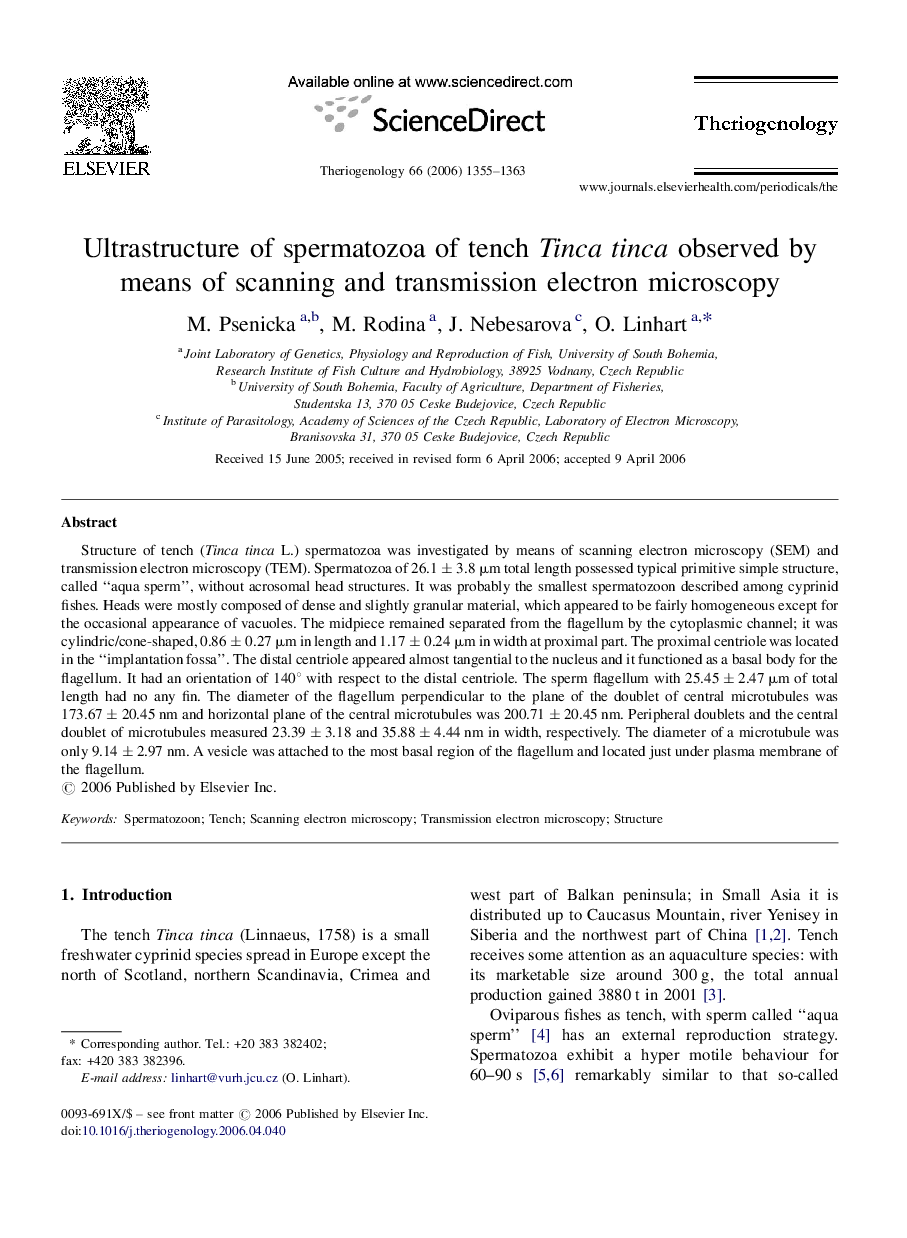| Article ID | Journal | Published Year | Pages | File Type |
|---|---|---|---|---|
| 2096925 | Theriogenology | 2006 | 9 Pages |
Structure of tench (Tinca tinca L.) spermatozoa was investigated by means of scanning electron microscopy (SEM) and transmission electron microscopy (TEM). Spermatozoa of 26.1 ± 3.8 μm total length possessed typical primitive simple structure, called “aqua sperm”, without acrosomal head structures. It was probably the smallest spermatozoon described among cyprinid fishes. Heads were mostly composed of dense and slightly granular material, which appeared to be fairly homogeneous except for the occasional appearance of vacuoles. The midpiece remained separated from the flagellum by the cytoplasmic channel; it was cylindric/cone-shaped, 0.86 ± 0.27 μm in length and 1.17 ± 0.24 μm in width at proximal part. The proximal centriole was located in the “implantation fossa”. The distal centriole appeared almost tangential to the nucleus and it functioned as a basal body for the flagellum. It had an orientation of 140° with respect to the distal centriole. The sperm flagellum with 25.45 ± 2.47 μm of total length had no any fin. The diameter of the flagellum perpendicular to the plane of the doublet of central microtubules was 173.67 ± 20.45 nm and horizontal plane of the central microtubules was 200.71 ± 20.45 nm. Peripheral doublets and the central doublet of microtubules measured 23.39 ± 3.18 and 35.88 ± 4.44 nm in width, respectively. The diameter of a microtubule was only 9.14 ± 2.97 nm. A vesicle was attached to the most basal region of the flagellum and located just under plasma membrane of the flagellum.
